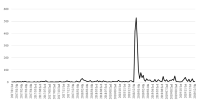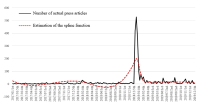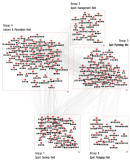
Purpose The purpose of this study was to conduct a typological classification of female college students in sport studies regarding perceived career barriers. Methods Q-methodology was used to identify female college students’ viewpoints on carrier barriers. The Q sample was distilled from 76 statements (64 from literature reviews and 12 in-depth interviews) to 25 statement after conducting literature review, in-depth interviews and surveys with open-ended questions. The P sample for this study was 30 students around Seoul and PQmethod software was used for data analysis. Results Three distinct views were extracted: First type of ‘career opaque’, revealed that students have failed to find their own aptitude and interest. Second type of ‘sexual discrimination-male centered’, implied students’ concerns about discriminating factors in relation to marriage and pregnancy for the job they desire. Third type of ‘Insufficient experience and qualification’, indicates students perceive their lack of experience or qualification required for their career. Conclusions The identification of these three viewpoints could provide insights that can be used to design more segmented and detailed career policies for female college students in sport studies.

PURPOSE This study aimed to examine the difficult realities, unresolved problems, and policy proposals of disability sports in Korea through the disability sports movies <Mal-aton> and <Glove>. METHODS We conducted a textual analysis from the perspective of critical theory. RESULTS The problems of Korean disabled sports revealed in the films <Mal-aton> and <Glove> could be cattegorized into three major issues: 'incorrect prejudice and indifference' of non-disabled people that disabled people will not be able to enjoy sports; 'sports facilities' where non-disabled people are prioritized and disabled people are marginalized, and the 'absence of sports facilities' specialized for disabled people; and the 'lack of leaders' who correctly understand the characteristics of the disabled. These have been pointed out as causes that keep them away from the natural right to enjoy sports. CONCLUSIONS The films <Mal-aton> (2005) and <Glove> (2011) were made based on true stories, and despite the fact that more than 10 years have passed since they were made, it remains a sad reality that the problems of Korean disabled sports shown in the films remain unresolved. Improvement measures in various aspects are required to promote sports for the disabled from the perspective of lifelong and adapted sports, such as media education and publicity that can eliminate misunderstanding and prejudice against people with disabilities, building sports facilities tailored to the disabled, and improving the treatment of sports instructors for the disabled.

Purpose The purpose of this study is to analyze issues of sexual violence case in sports field reported in the press by using spline function model and text mining. In specific, spline function model is used to measure social interest level based on issue attention cycle theory and figure out the flow of issues by applying text mining. Methods Study material is 2,660 news articles reported from January 1, 2017 to December 31, 2019 and press DB(Big Kinds) of Korea Press Foundation is used to collect study material. Results Social interest level on sexual violence case in sports field is dramatically increased due to disclosure of Sim player starting from Me Too movement started from the culture and art world. Because of this, as structural problem in sports field arises, social interest level comes to a climax, and then it was founded that the government’s countermeasures establishment and special audits by the Ministry of Education were in progress. From the perspective of the issue attention cycle, it has the stages of latent-occurrence-rising-decision-decay-disappearance, but the period from rising to declining is short, so it corresponds to a breaking issue attention cycle. Conclusion This study examines the progress of sexual violence case in sports field from rising to disappearance in the perspective of the issue attention cycle. With this incident, the world of sports is establishing sports ethics center and proceeding policies such as Basic Sports Act, and the future studies need to review the effectiveness of this policy.



Purpose The purpose of this study is to find effective skin scuba activation factors and to provide basic data that extend the scope of research related to skin scuba. Methods Delphi method was used and the experts were categorized by experts to analyze the results. The questionnaires collected through the 2nd and 3rd delphi surveys were SPSS win ver. 22.0 and Microsoft Office Excel 2013 to calculate mean, standard deviation, median, and coefficient of variation. The concrete conclusions are as follows. Conclusions First, in terms of organization sub-factor, fostering sports-for-all participants and college club came out to be very effective and followed by cooperation system with Ministry of Public Safety and Security and Ministry of Oceans and Fisheries, strengthening cooperation and exchange with other education organizations, initializing new scuba diving education organization management and inspection institution and establishing scuba diving education organization. Second, in terms of facility/equipment sub-factor, factors that cause most effectiveness came out as expanding scuba-diving installation, developing connection system with medical department, enlarging indoor-diving education facilities, improving scuba diving equipment, consecutively. Third, in terms of leader sub-factor, training instructor through leader personality education and verification came out to be the most effective, followed by objectifying professional education institution leader training system, improving leader treatment. Fourth, in terms of program sub-factor, it is found that safety education program as the most effective factor, coming next with environment education/professional manpower training program, developing various programs, lastly, inventing insurance product. Fifth, in terms of advertisement sub-factor, as in order of guiding publics to change their view towards scuba-diving, expanding scuba-diving related events and establishing advertisement system had its effectiveness. Sixth, in terms of policy sub-factor, establishing cooperation system among administration departments came out to be most effective and then improving related law-system.
PURPOSE This study analyzed the KSPO women’s sports leadership program and foreign cases to suggest policy proposals. METHODS A literature review was conducted involving official webpage of the programs, related technical reports, media resources, and academic articles collected from international and domestic research databases. RESULTS The major results are as follows: (1) The curriculum of current program should be examined and reconstructed to achieve the intended purpose. (2) Since selfawareness is a key factor in demonstrating effective leadership, implementing selfawareness training program should be considered. (3) Mentoring is regarded to be an effective tool in promoting women leadership; therefore, establishing sustainable women mentoring program is required. CONCLUSIONS Despite several limitations, this paper is the first study, to the best of our knowledge, to review and analyze the KSPO women’s sports leadership program comparing foreign cases for the purpose of seeking improvement. As women’s leadership in the field of sport would become even more important in the future, this program should be redesigned to be able to train and nurture leaders so that they can progress to the higher level of decision making in sport organizations.
PURPOSE This study examined levels of safety knowledge and practice among recreational sports participants, focusing particularly on impacts of gender, age, injury experience, and exercise-level profile. In sports environments, understanding these factors is essential for developing targeted strategies to promote safe behaviors. METHODS Survey data from 7725 participants engaged in regular recreational sports activities were analyzed. Latent Profile Analysis was employed to categorize participants based on their injury experience and exercise levels, resulting in two profiles: Group 1 (moderate or severe injury experience with intermediate exercise levels) and Group 2 (mild injury experience with beginner exercise levels). Three-way ANOVA was then used to evaluate relationships between these profiles and safety knowledge and practice levels. RESULTS Results revealed significant differences across sex, age, and profile groups. Compared with women, men demonstrated higher levels of safety knowledge and practice, which were likely influenced by greater exposure to high-intensity sports and risk-taking tendencies. Adolescents exhibited the highest levels of safety knowledge and practice linked to structured safety education, but these levels declined in early adulthood and then increased again in middle age due to growing health awareness and preventive motivations. Furthermore, participants in Group 1 consistently showed higher levels of safety knowledge and practice than those in Group 2, highlighting injury experience’s role in shaping safety behaviors. CONCLUSIONS These findings underscore the importance of developing gender-specific safety education programs, age-appropriate interventions, and training initiatives tailored to beginning participants. Future research should evaluate these strategies’ long-term impact on safety practices and injury prevention in diverse sports settings.
PURPOSE This study aimed to analyze research trends in physical education within small schools from 1992 to the present, offering insights and directions for future research in this domain. METHODS To achieve this objective, we gathered data from 22 domestic journals utilizing keywords such as “small school,” “combined class,” “farming and fishing village,” “physical education,” and “sports.” Subsequently, the collected data encompassing topics, keywords, methods, subjects, and research areas, were organized using Excel. We employed the Word-Cloud program for the analysis of frequency by period and subject words by period. RESULTS Trends in physical education within small schools were categorized into three primary aspects: subject, method, and research area. Firstly, concerning research topics, the predominant focus centered on the application of teaching and learning as well as the curriculum management, with less emphasis on pre-service and incumbent teachers. Secondly, research methods shifted from quantitative to qualitative approaches starting in the 2000s. However, the utilization of qualitative research methods displayed limited diversity. Lastly, we analyzed the research area by classifying it into the region where the research subject is situated and the region to which the researcher belongs. The Gyeongsang and Gangwon regions constituted the majority in both categories, with over half of the researchers hailing from Gyeongbuk. CONCLUSIONS This study underscores the growing necessity for research into physical activity within small schools, given the increasing proportion of such institutions. It offers valuable insights for future research endeavors in the realm of physical activity within small schools.
[Purpose] This study aims to examine the research trends in Korean women’s sport history and provide suggestions for future research by reviewing journal articles conducted in the last ten years (2007-2016). [Methods] The articles were selected from the Korean Journal of History for Physical Education, Sport, and Dance, which is the only, representative sport history journal in South Korea. 66 articles identified as studies of women’s (or women-related) sport history were analyzed in five categories, including a) period, b) theme/topic, c) purpose, d) method, and e) country. [Results] Specifically, the analysis by period showed that 90% of the research focused on modern and contemporary history, while only 7% of the research was set in pre-modern history. According to the analysis by theme/topic, genre has been studied most often with 36%, followed by figure (20%) and facility/institution/organization (15%). By the criteria of purpose, it was found that the majority of the research (48%) focused on historical evolution and transition, while the research on comparison/relation was of little scholarly interest. Regarding the category of method, textual analysis was used most often, with 70% followed by oral life history (27%). By the criteria of country, the largest ratio of papers studied Korea (75%) while only 3% of studies examined other East Asian countries, such as China or Japan. Comparative, diasporic, or transnational studies were the second most popular subcategory (11%). [Conclusion] According to the results, it was acknowledged that there has been a significant lack of interest in women’s sport history by Korean scholars and “sport herstory” is largely underresearched. In addition, the excessive concentration on a specific period or a particular theme was also exposed. To rectify the biased research practice and promote scholarly growth and enhancement in both academia of Korean women’s sport history and Korean sport history, it is necessary to consider the expansion of historical materials, application of new methodology, cross-disciplinary conversation, and theorization in studying women’s sporting experiences.
PURPOSE This study explores injury attributions accepted by serious football participants, specifically intermediate and advanced players. METHODS Utilizing Q methodology, 25 Q-samples and 33 P-samples were selected, and Q-classification was conducted. Principal component factor analysis through the PQ method (vers. 2.35) was employed for data analysis, and types were interpreted and named based on the Q-sample with a Z-score of ±1.0 or higher. RESULTS Results categorized injury attributions accepted by the participants into four types: 'Type I: Facility/ Human Resource Responsibility Type,” 'Type II: Luck/Other Responsibility Type,” 'Type III: Self Responsibility Type,” and 'Type IV: Insufficient Safety Education.” This study provided academic and policy discussions by reclassifying four types according to their internal and external location and controllability. CONCLUSIONS In conclusion, this study emphasizes the relevance of all four types of injury attribution to policy considerations. Ensuring participants' right to participate in safe and enjoyable sports requires addressing facilities/human resources, education, and insurance as major policy components of sports safety.

To examine the flow of knowledge structure in Korean journals of sport and social sciences over the last 10 years, this study has derived a knowledge map by conducting community analysis, one of the social network analysis methods, on Korean Journal of Sports Industry Management, Korean Journal of Sport Pedagogics, Korean Journal of Sport Sociology, Korean Journal of Sport Psychology and Korean Journal of Leisure and Recreation. According to the analysis result, the integrated knowledge map for the field of sport and social sciences was classified into 5 groups and these groups were derived to be similar to the knowledge structure of the keyword groups for the research topics of the five journals targeted by this study. Along with this result, at the same time, it has been confirmed that most of the groups shared keywords with each other. Especially, some of the keywords for the research topics of sports industry management have transferred to the research topics of leisure and recreation and those of sport sociology. Sport sociology has been revealed to be closely related to sports industry management and sport psychology. In the case of sport psychology, it has been confirmed that it is related to most of the other groups and the psychological variables for understanding human behavior can be widely used. It shows that leisure and recreation is highly related to sport psychology and sport management in terms of keywords for research topics but it is suggested that it also needs its own independent research topics. Sport pedagogics, by its nature, is an isolated field but interacts with sport psychology and attempts can be made to expand its research topics through an approach based on the concept of pedagogy for physical education.
